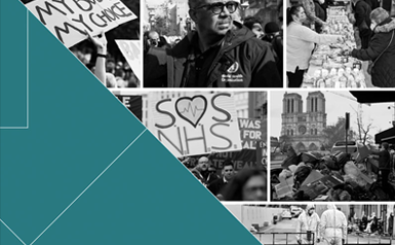From the 1968 Kubrick classic “2001: A Space Odyssey” through the 1999 sci-fi action film “The Matrix” and all the way to today’s “Mr. Robot” drama series, pop culture has been repeatedly portraying a dystopian future. In this future, developments in computing and cyber security have taken a turn for the worst for humankind.
Considering the 7 billion identities stolen in less than a decade and the 15 mega breaches in 2016 alone (resulting in 1.1 billion stolen identities), one cannot help but wonder: Is this dark vision of a world of insecurity and distrust becoming a reality? A line-up of top-notch speakers gathered recently at WIRED Security 2017 to demystify what the future holds and discuss how the evolving cyber threat landscape is shaping our society.
In line with the findings of the 2017 Edelman Trust Barometer, which revealed that the public in 20 out of 28 countries does not trust their institutions (including NGOs, businesses, media and government), speakers at the event unanimously identified distrust as the most powerful weapon for disruption in the digital era. Sharing their insights, predictions and thoughts on the ever-changing cyber space, researchers, AI developers, government scientists and intelligence specialists all recognised the threat that the lack of certainty and security pose to trust.
Unpacking the May WannaCry ransomware attack and its aftermath through the lens of time is actually the perfect example to showcase how trust in businesses, the private sector and states is crumbling with each cyber-attack.
Having analysed the ransomware and the way the attack unfolded, security specialists concluded that while WannaCry was not necessarily ground-breaking, its impact was unprecedented. The brutal reality is that the ransomware was configured with what the industry labelled as ‘amateur mistakes’, which significantly limited the attackers’ profits. However, many would argue that this is irrelevant since the one and only purpose of the attack was to create disruption on a global scale. Judging by the questions raised in the wave of ongoing news coverage on the topic, they were more than successful.
Over the course of six months, we saw the blame for the number of consumers affected shifting from one organisation to the other, speculating about the role certain states had to play in what could be the biggest politically-driven ransomware campaign to date.
And yet, what’s the learning here? Never has the answer been so clear.
We are yet to see the implications of our society’s inability to keep pace with the rate in which advancements in technology are driving digitalisation. And since the increasing number of mega breaches have to an extent desensitised us from the fear of having our details stolen or having our passwords leaked we are bound to feel a false sense of security in the face of the increasing number of large scale cyber hacking incidents. But as a research fellow at Chatham House Beyza Unal concluded at the WIRED Security keynote stage: “The moment you think you’re most secure is the moment you are most vulnerable to attack”.
With that in mind, organisations need to take stock – albeit not only of the steps being taken to prevent a potential attack. Instead, the priority should be to create transparency and build confidence among stakeholders, so that when the inevitable happens, the organisation can be trusted to adequately address the incident. The number one vulnerability of any organisation is the trust put in it by its stakeholders – its loss is the irreversible and the most catastrophic impact a security breach could have.
Hear more about the issues related to a major security breach on Sideload, the technology Podcast from Edelman London.



